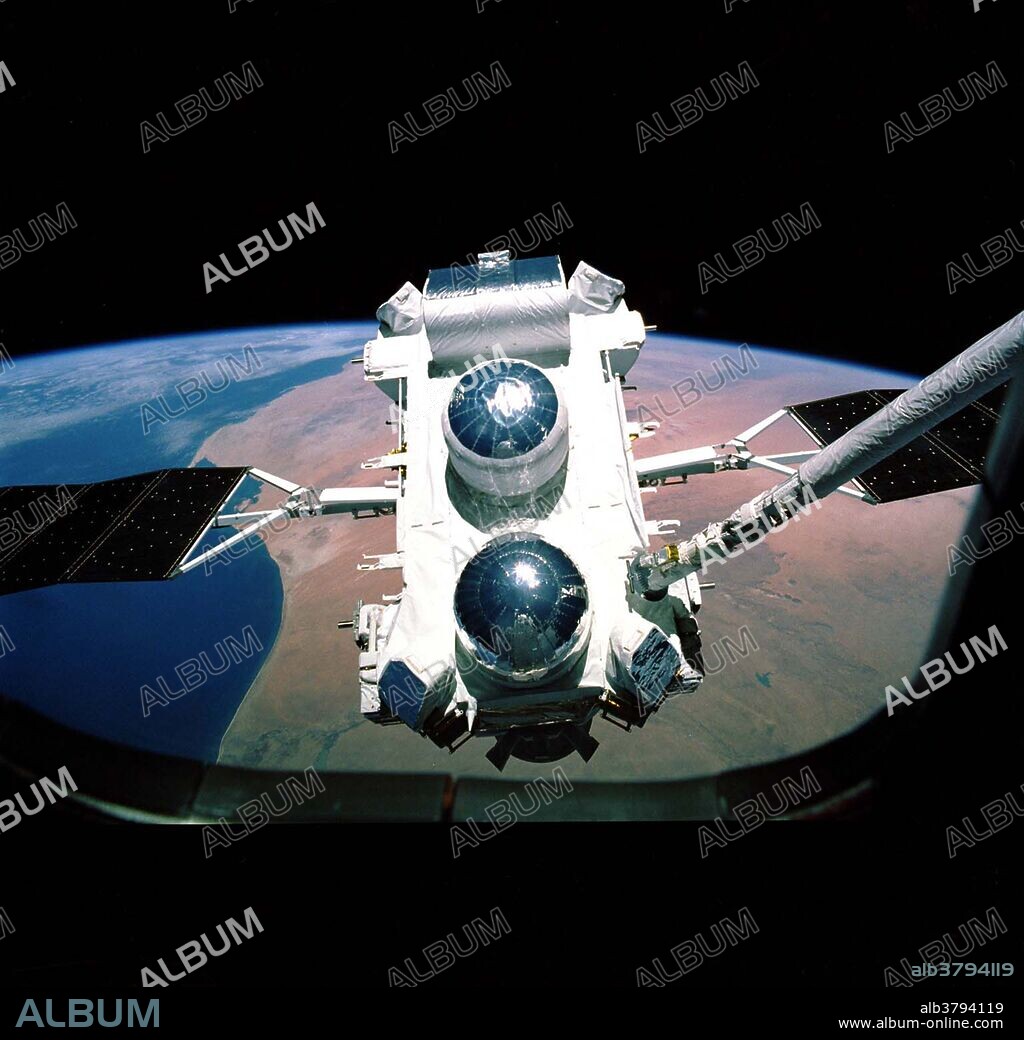alb3794119
STS-37, Compton Gamma-Ray Observatory, 1991

|
Add to another lightbox |
|
Add to another lightbox |



Buy this image.
Select the use:

Title:
STS-37, Compton Gamma-Ray Observatory, 1991
Caption:
Compton Gamma-Ray Observatory (GRO) being deployed by the Remote Manipulator System (RMS) arm aboard the Space Shuttle Atlantis during STS-37 mission, April 1991. The GRO reentered Earth atmosphere and ended its successful mission in June 2000. For 9 years, the GRO Burst and Transient Source Experiment, designed and built by the Marshall Space Flight Center, kept a watch on the universe to alert scientists to the invisible, mysterious gamma-ray bursts that had puzzled them for decades. By studying gamma-rays from objects like black holes, pulsars, quasars, neutron stars, and other exotic objects, scientists could discover clues to the birth, evolution, and death of stars, galaxies, and the universe. The gamma-ray instrument was one of four major science instruments aboard the Compton. It consisted of eight detectors, or modules, located at each corner of the rectangular satellite to simultaneously scan the entire universe for bursts of gamma-rays ranging in duration from fractions of a second to minutes.
Category:
Astronomy & Space
Credit:
Album / Science Source / NASA Marshall Space Flight Center
Releases:
Image size:
3750 x 3613 px | 38.8 MB
Print size:
31.8 x 30.6 cm | 12.5 x 12.0 in (300 dpi)
Keywords:
1990S • 1991 • 20 20TH XX XXTH TWENTIETH CENTURY • 20 XX TWENTIETH CENTURY • 20TH CENTURY • 20TH • AEROSPACE • AMERICA • AMERICAN • ASTRONAUTICS • ASTRONOMY & SPACE • ATLANTIDA • ATLANTIS • BATSE • BURST AND TRANSIENT SOURCE EXPERIMENT • CELEBRITIES • CELEBRITY • COMPTON GAMMA-RAY OBSERVATORY • DEPLOYED • DEPLOYING • DEPLOYMENT • EVENT • EVENTS • FAMOUS PEOPLE • FAMOUS • FLIGHT • GAMMA RADIATION • GAMMA RAY SOURCES • GAMMA RAY • GAMMA-RAY ASTRONOMY • GAMMA-RAY OBSERVATION • GAMMA-RAY SOURCES • GAMMA-RAY • GREAT OBSERVATORIES PROGRAM • GRO • HISTORIC • HISTORICAL • HISTORY • IMPORTANT • MANNED SPACE FLIGHT • NASA • NATIONAL AERONAUTICS AND SPACE ADMINISTRATION • NOTABLE • ORBITER VEHICLE • ORBITER • REMOTE MANIPULATOR SYSTEM • RMS • SCIENCE • SPACE EXPLORATION • SPACE FLIGHT • SPACE PROGRAM • SPACE SHIP • SPACE SHUTTLE PROGRAM • SPACE SHUTTLE • SPACE TRANSPORTATION SYSTEM • SPACE TRAVEL • SPACECRAFT • SPACEFLIGHT • SPACESHIP • STS • STS-37 • TECHNOLOGICAL • TECHNOLOGY • TWENTIETH CENTURY • UNITED STATES • US • USA • VEHICLE • WELL-KNOWN


 Pinterest
Pinterest Twitter
Twitter Facebook
Facebook Copy link
Copy link Email
Email
